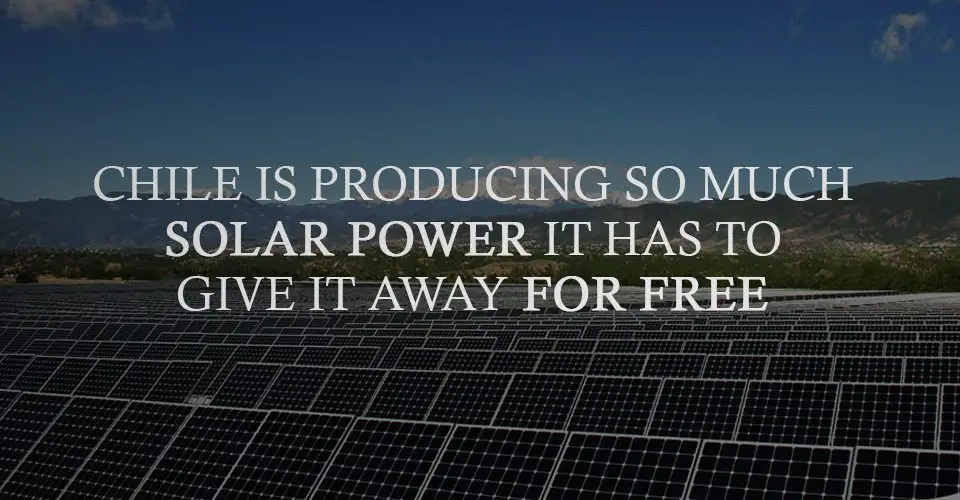The Power of Renewables: Chile’s Solar Energy Is So Abundant, They’re Giving It Away For Free


In a remarkable development sure to draw the attention of alternative-energy proponents worldwide, the Latin American nation of Chile is producing so much energy from its solar grid that it’s essentially free.
As of April, the spot price for electricity in Chile hadn’t risen above zero in 113 days, in a run that is sure to beat 2015’s 192 days of the spot price being held at zero.
This could be great news for Chilean electricity consumers. Because of the tariff structure presently in place in Chile, consumers in places that have a population density lower than that of Santiago must pay higher rates for their electricity. To some degree this makes sense -it’s a fairly standard cost vs benefit equation- but in a nation where 14.4% of the population lives below the established poverty limit, a newly-enacted tariff bill that passed Congressional approval on June 1 could mean significant benefits for the Chilean population. The legislature, drafted as a part of President Michelle Bachelet’s energy agenda, is just the latest development in restructuring energy protocols for a nation that has an enormous energy surplus.
How did this happen? As it turns out, mining is key in the creation of the energy surplus.
Mining -that dirty, risky, problematic source of non-renewable, unclean energy that so much of the world still relies on- has experienced a substantial boost recently in Chile, and as it turns out, it’s largely due to expansion in solar energy investment.
CORFO, the Chilean Economic Development Agency, has structured its agendas so that the mining industry receives fully one-fifth of the energy it requires to sustain operations from renewable resources by 2020. This kicked the production of solar energy -renewable energy- into high gear, and now the country is literally producing more energy than it requires.
Related: Energy Revolution: Printable Solar Cells
Eleven million Chileans will see an effective benefit from the reduction in energy tariffs, states Energy Minister Maximo Pacheco. The tariff also includes further discounting for towns in areas that produce the majority of Chilean energy.
Is there a downside? Market prices of copper, the driving force behind mining operations in Chile, are lagging, so it could turn out to be a boom-for-bust scenario. Furthermore, the bifurcation of Chile’s national energy grid means that certain sectors have more or less power than they actually need, and inconsistencies within power delivery continue to plague both commercial and consumer demands for energy. Furthermore, the demand for power by a then-dynamic mining industry pushed so many solar developers into business that supply is outstripping demand considerably.
Related: Peru to Provide Free Solar Panels to its Poorest Residents
Nonetheless, the Chilean energy economy will continue to benefit from the advances in solar development. President Bachelet has made Chilean energy policy a clear priority, and legislature is regularly being developed to stabilize transmissions and decrease the bifurcation between the North and Central grids. In the meantime, Chilean households and businesses will continue to benefit from an energy policy that utilizes healthy, renewable resources at lower rates than they ever could have imagined possible.


